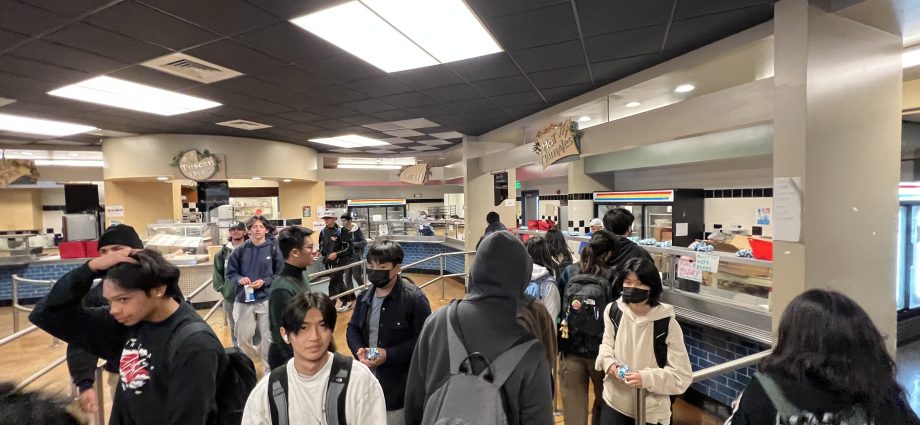n spite of the long lines and the overall stereotype that school lunch is poorly received, a school survey conducted by The Union found that 58%, of the 148 student respondents expressed positive feelings towards the items on the brunch and lunch menu. The development and maintenance of such a menu, intended to serve a little over 3000 students, is a lengthy process, MUSD Director of Student Nutrition Services Sandy Huynh said in an email.
“Our meals must meet the federal meal pattern and nutrition guideline, and they are grade-level specific,” Huynh said in an email. “Each of our meals must offer whole grains, lean protein, fruit, vegetables, and milk while meeting the specifications for calories, sodium, and fat.”
While the development process for the lunch menu is largely handled at the administrative level, on the field interaction with students are handled by the cafeteria workers. Whether it’s preparing or plating the food, restocking ingredients, or monitoring the ID lines, these essential service workers have firsthand experience with student attitudes towards the menu. Certain items have become student favorites over time. However the main struggle is encouraging students to take a complete meal, Student Nutrition Services (SNS) Senior One Patricia Yount said.
“We don’t want to nag them or make them feel like they have to, but they really do have to take a complete meal,” Yount said. “You know, they have to have a fruit, they have to have a vegetable.”
Though student resistance to complete lunch meals is ongoing, MHS Student Nutrition Services branch lead Caterina Lapena said that there are consistent efforts to diversify the menu to cater to a variety of students’ preferences.
“Just recently we were doing Indian food, so that’s something new,” Lapena said.
However, the process of adding new menu items is tedious due to compliance regulations from both the federal and state government that the school district must follow, Huynh said.
“We constantly are searching for new, compliant products; reviewing historical data; soliciting feedback from students via surveys; and taste testing new items,” Huynh said. “We strive to offer a menu that is not only compliant, but tasty and enjoyable to our students.”
Yount said both students and the supervisors of SNS were working towards being more culturally responsive to the student body.
“We really are trying to please everyone,” Yount said. “There was a student member that came in and started this little vegan area.”
The universal meal program, which is a state initiative that began providing free brunch and lunch meals in the 2022-2023 school year, has added a new strain on her department to meet the demand, largely because meal participation has increased as a direct result of the free waiver, Huynh said.
“In addition, the pandemic has disrupted the supply chain,” Huynh said. “We are constantly experiencing supply shortages and limited product availability.”
Sophomore Carmella Henderson, who gets brunch and lunch almost everyday, noticed the food department’s efforts to diversify the menu, she said.
“It’s pretty good how we have different things,” Henderson said. “And it’s kind of interesting to discover new cuisines from different areas of the world and different cultures.”

